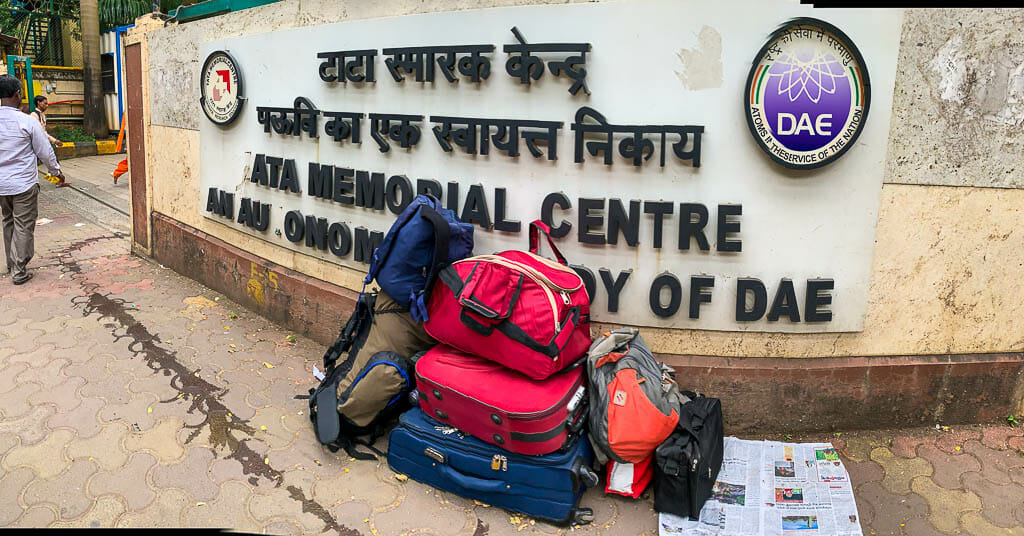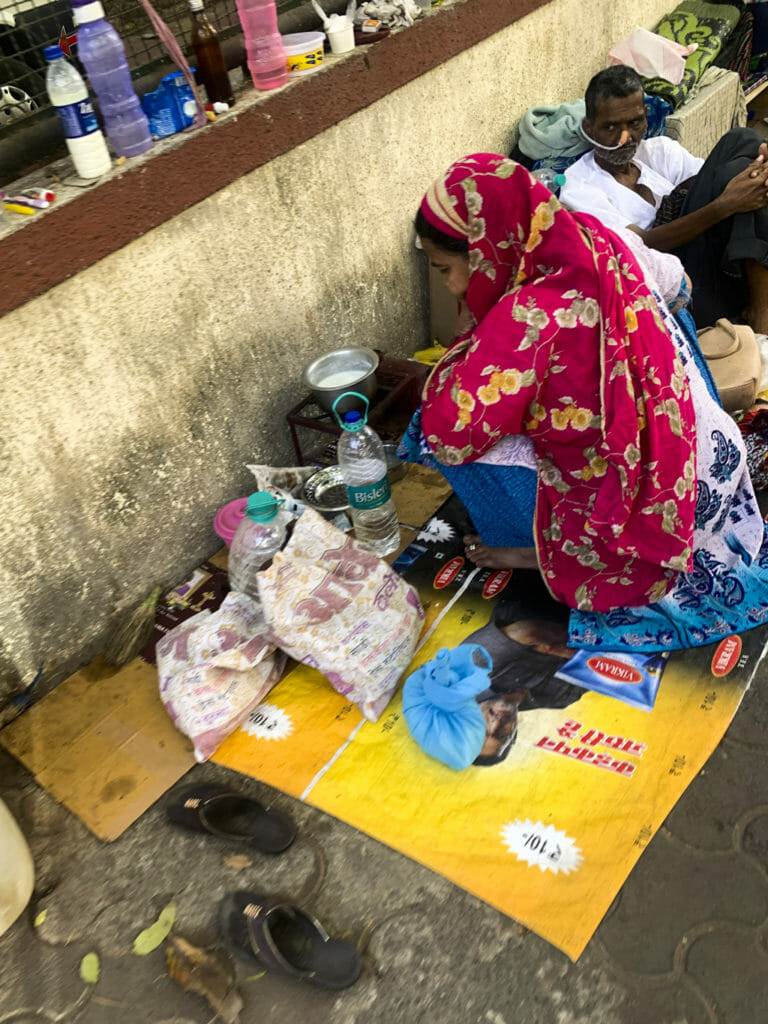37-year-old Nitin has been a tobacco user for more than 10 years. Last month, he was swinging between life and death in Parel’s King Edward Memorial (KEM) Hospital after suffering from a heart attack. “I was experiencing pain in my chest, I was unable to breathe. They performed CPR when I reached KEM. I underwent angioplasty and was admitted for a week,” says Nitin, who works as a private driver in Mumbai.
The city witnessed a jump in heart-attack cases in the first six months of 2021 as a total of 17,880 lost their lives to it. Nearly 3,000 died every month; in 2020 the monthly figure was around 500.
Many risk factors associated with heart-attack are controllable, like smoking. All tobacco products lead to some of the most painful diseases and health conditions, and every tobacco user is aware of this fact. Nitin used to finish a pack of cigarettes in a day. “We think we can quit anytime and bad things only happen to others until something bad happens to us,” he says.
Read more: Cancer patients take shelter in the footpaths of Mumbai during lockdown
Tobacco user’s attempt to quit
It is not as if Nitin did not try to quit. He did try, multiple times, again and again, but failed. “I tried giving it up all at once, even tried using alternative products like nicotine gum and e-cigarette. Nothing worked,” he says.
‘E-cigarettes’ is an informal way of saying Electronic Nicotine Delivery Systems (ENDS), which are devices that heat a liquid to create an inhalable aerosol. The World Health Organization (WHO) unequivocally states that there are health risks associated with these products even though they do not contain tobacco.
India banned ENDS in 2019 by creating the Prohibition of Electronic Cigarettes Act “in the interest of public health”. However, hazardous marketing and advertising around ENDS rely heavily on social media, giving it a global reach.
In all his attempts to quit smoking, Nitin never thought of visiting the Tata Memorial Centre (TMC), which is only a few minutes from his residence, where a tobacco cessation clinic has been functioning since the early 2000s under the Preventive Oncology Department. He never went to this clinic simply because he had never heard of it.

Another thing he never noticed, all the while holding it in his hand every day, was a tobacco quit-line number 1800-11-2356 on a cigarette box. “I used to avoid looking at the images on the box, which is why I probably never noticed the number,” he says.
Policies in place to control tobacco
A recent survey suggests that Maharashtra has the most number of tobacco users who plan to quit for better health. It also states that out of all the cigarette smokers they surveyed, only 34% of them knew about the quit-line number, which is the Ministry of Health and Family Welfare’s (MoHFW) initiative in line with India’s National Tobacco Control Programme.
Launched in 2007, the programme aims to create awareness about the harmful effects of tobacco consumption, reduce the production and supply of tobacco products, ensure effective implementation of the Cigarettes and Other Tobacco Products Act (COTPA), and help people quit tobacco use. It also looks at the implementation of strategies laid under WHO’s Framework Convention of Tobacco Control, which India ratified in 2004.
The framework mandates strategies to control demand as well as supply. For instance, demand control initiatives include, among other things, levying heavy taxes on tobacco products, the quit line number, establishing tobacco cessation clinics, and laws on the packaging and labelling of tobacco products and their advertisements. On the other hand, supply control measures include the prohibition on sales to and by minors, illicit trade in tobacco products, and provision of support for economically viable alternative activities.
When fear of death strikes a tobacco user
TMC’s tobacco cessation clinic is one of the initial 13 established in 2002 by MoHFW in collaboration with WHO.
The hospital’s in-house Medical Social Worker (MSW) recounts a large number of people she has counselled in the last two decades and says, “It is rare that someone comes here with the sole intention of quitting. Tobacco users who mostly have a cancer scare, like after experiencing prolonged oral ulcers visit us.”
People across socio-economic classes visit the clinic, the counsellor says. It is not easy for the department to maintain or continue with follow-up counselling, which is a crucial factor in the programme. It is important for a tobacco user to complete the entire counselling process, she says. The clinic provides a package of tests for Rs 900—relatively cheaper than other private facilities—which includes screening for breast cancer, cervical cancer, prostate cancer, oral cancer, a doctor’s consultation and counselling done by the MSW official.
Controlling tobacco epidemic
As of 2018, under the National Tobacco Control Programme (NTCP), there are more than 400 tobacco cessation facilities across the country. The list mentions the total number of facilities in a state or a union territory and has details like the facility’s name and the district where it is situated. Maharashtra is one of the states in the list that does not provide the name or location of any of the facilities it claims to have.
Contrary to this data, in February 2019, Maharashtra’s then health minister, and the present chief minister, Eknath Shinde claimed that a total of 309 tobacco cessation centres were set up across the state.
News reports also suggest that health department at the time claimed that a total of 1.42 lakh tobacco users were counselled up until December 2018.
Apart from Mumbai city, all the other 34 out of the total 35 districts are covered under the NTCP.
Restriction on tobacco user’s consumption only on paper
Meanwhile, COTPA, which, among other things, bans the sale of tobacco products in an area within a radius of one hundred yards of any educational institution is applicable across the country.
The law hasn’t stopped people from putting up cigarette shops near some of Mumbai’s major higher educational institutions. Brihanmumbai Municipal Corporation’s (BMC) newly appointed Anti-Encroachment department head Mrudula Ande says, “There is a ward level team to look after this (unauthorised cigarette shops), they take regular action.”
The majority of tobacco users around the world start consumption before the age of 18. One in every 10 girls and one in every 5 boys, in the age group of 13 to 15, is a tobacco user. The idea behind the ban on the sale of tobacco products near educational institutions is to deter minors and young adults from engaging in tobacco use.
In 2020, Maharashtra became the first state in the country to ban the sale of loose cigarettes and bidis. However, it only remains on paper as retailers are openly violating it. Multiple attempts were made via phone to reach Mumbai Police Commissioner Vivek Phansalkar for comment from the law enforcement perspective, however, he remained unresponsive.
Deputy Executive Health Officer Dr Daksha Shah says only one de-addiction centre is under BMC at Bhardawadi in Andheri. The centre helps with all kinds of substance addiction with free-of-cost pharmacological treatment, individual counselling, as well as support group meetings.
Can we cut down tobacco production?

NTCP aims to reduce the production and supply of tobacco products. However, the country remains to be the second largest producer of tobacco in the world with 761,318 tonnes of yearly production.
A closer look at the NTCP and COTPA suggests a larger burden on the masses to make the right choice, either by never using tobacco products in their lifetime or by quitting before it is too late. Dr Upendra Bhojani, Director of the Institute of Public Health, Bengaluru, who has been a prominent voice in the fight against tobacco, says, “The focus needs to be on both, the supply reduction as well as demand reduction. To some extent, there seems to be a disproportionate focus on demand reduction in COTPA. But at the same time, we also have provisions in it to reduce the supply, like the ban on sale around educational institutions.”
Health economist Dr Rijo M John, whose work looks at taxation policies on tobacco products, says, “The only way to reduce production is to get a grip on the demand. If you reduce the supply without a genuine reduction in demand, that can only lead to illicit trade and that shouldn’t happen.”
Need for heavy taxation on tobacco products
Dr John says the Goods and Service Tax (GST) has had no impact on the tobacco industry. “It has achieved the goal to unify the taxation system in the country but it has been a bad thing as far as regulation on tobacco products and their consumption is concerned,” he says. Dr John is of the opinion that heavy taxes on tobacco products will reduce the demand, which in turn will reduce the supply.
He adds that GST took away the power of the states to control tobacco by levying heavy taxes. “Earlier, the Central excise duty used to be the same on tobacco products but VAT used to vary from state to state. Some states like Rajasthan at one point had up to 65% VAT on tobacco products,” he says.
Dr John points out that post-GST the only time taxes slightly increased for tobacco products was when the National Calamity Contingent Duty (NCCD) was revised in the 2020-2021 budget. The NCCD was part of the earlier taxation regime and was brought back only for tobacco products under the GST regime.
“As opposed to the pre-GST regime, there is no more annual increase in taxation on tobacco products,” he says. As a result of lack of taxation is easy affordability and availability of tobacco products leading to high consumption, Dr John says. “The overall inflation in India is much higher than the tobacco product specific inflation,” he says.
Meanwhile, Nitin says, “My only appeal to all is to leave this habit before it too late.”